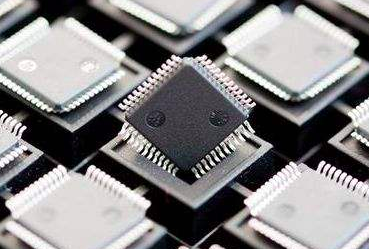Main classification and application fields of MEMS sensors

Chip design front end
MEMS sensor is an interdisciplinary frontier research field developed on the basis of microelectronics technology. After more than 40 years of development. It has become one of the major science and technology fields attracting worldwide attention. It involves electronics, machinery, materials, physics, chemistry, biology, medicine and other disciplines and technologies, with broad application prospects.
First, the main classification of MEMS sensors
-
Sensing
Sensing MEMS sensor technology refers to the use of micro-electronic micro-mechanical processing. With sensitive components such as capacitance, piezoelectric, piezoresistive, thermoelectric coupling, resonance, tunnel current, etc., to feel the conversion of electrical signals of the device and system. It includes speed, pressure, humidity, acceleration, gas, magnetic, light, sound, biological, chemical and other sensors, according to the types of the main: array tactile sensor, resonant force sensor, micro acceleration sensor, vacuum micro-electronic sensor, etc.. The development direction of sensor is array, integration and intelligence. As sensor is the antenna of human exploration of nature, is the neuron of various automatic devices, and widely used in the future will be paid attention to by all countries in the world.
2. Biological
It can realize the whole process of sample injection, dilution, reagent addition, mixing, expansion, reaction, separation, detection and post-treatment. It condenses traditional analytical laboratory functions onto a chip. Biological MEMS system has the characteristics of miniaturization, integration, intelligence and low cost. In function, it has the characteristics of large amount of information acquisition, high analysis efficiency, less connection between the system and external, real-time communication and continuous detection. The research of biological MEMS has become a hot topic in the world, and it will bring a great innovation to biological and chemical analysis system soon.
3. Optical
With the rapid development of information technology and optical communication technology, another field of MEMS development is the combination of optics, that is, the integration of microelectronics, micromachinery, optoelectronic technology and other basic technologies, the development of new optical devices, called micro electromechanical system (MOEMS). It can integrate all kinds of MEMS structure with micro-optics device, optical waveguide device, semiconductor laser device, photoelectric detection device, etc.
Form a new functional system. MOEMS features small size, low cost, mass production, precise drive and control. The successful applied scientific research mainly focuses on two aspects: one is the new display and projection equipment based on MOEMS, which mainly studies how to carry out spatial modulation of light through the physical movement of reflection surface. The typical examples are digital micromirror array chip and grating light valve. The other is the communication system, which mainly studies how to control the expected changes of the optical path through the physical movement of the micromirror. The successful optical communication devices include optical switch modulator, optical filter and multiplexer. MOEMS is a comprehensive and interdisciplinary high and new technology, the development of scientific and technological research in this field can drive the development of a large number of new concept functional devices.
4. Radio Frequency
Fixed MEMS sensor include bulk micromachined transmission lines, filters and couplers, and movable MEMS devices include switches, tuners and variable capacitors. According to the technical level, it is divided into the basic device level composed of micromechanical switch, variable capacitor and inductor resonator; Component level composed of phase shifter, filter and VCO, etc.; The application system is composed of monolithic receiver, variable beam radar and phased array radar antenna.
What are the main application areas of MEMS sensors?
1. Medical
MEMS sensors can be use in noninvasive fetal heart detection, such as fetal heart rate. Because the fetal heart rate is very fast, between L20 ~ 160 times per minute. With the traditional stethoscope or even only amplification of ultrasonic Doppler instrument. It is difficult to measure accurately with manual counting. However, the ultrasonic Doppler fetal heart monitor with digital display function is expensive. In addition. Ultrasonic vibration wave acting on the fetus will have a great adverse effect on the fetus. Although the test dose is very low, it belongs to the category of lossy detection and is not suitable for frequent. Repetitive examination and home use.
Then A series of intermediate signal processing such as filtering, using A/D converter to convert analog voltage signal into digital signal. Through the optical isolation device input to the microcontroller for analysis and processing, and finally output the processing results.
However, the central signal acquisition and analysis monitoring host at the hospital end will give automatic analysis results, and the doctor will diagnose the results. The technology is beneficial for pregnant women to check the condition of the fetus at any time, conducive to the health of the fetus and pregnant women.
2. Car
MEMS sensor for vehicles have several common forms, such as capacitance, piezoresistive, differential transformer and surface acoustic wave. And the principle of MEMS accelerometer is based on Newton’s laws of classical mechanics, usually composed of the suspension system and test quality, by micro silicon mass migration to detect acceleration, it is mainly used for automobile airbag systems, anti-skid systems, car navigation systems, and security systems, etc., in addition to the capacitance type, piezo-resistive type, MEMS accelerometer also piezoelectric, tunnel current, resonant and thermocouple and other forms. Among them, capacitive MEMS accelerometer has the characteristics of high sensitivity and little influence by temperature, and is the mainstream product of MEMS micro-accelerometer.
Microgyro is an angular rate sensor, mainly used for GPS signal compensation of automobile navigation and automobile chassis control system. Mainly including vibration type, rotor type and so on. The most widely used vibratory gyroscope uses monocrystalline silicon. Or polycrystalline silicon vibratory mass block is driven rotation by the base to generate the Coriolis effect to sense angular velocity. For example, when the car is turning, the system measures the angular velocity through the gyroscope. To indicate whether the steering wheel is in place. And takes the initiative to add appropriate braking on the inner or outer wheels. To prevent the car from leaving the lane. Usually, it and the low accelerometer together constitute an active control system.
3. Exercise tracking
In skiing, pressure sensors, accelerometers, gyroscopes and GPS in 3D motion tracking allow users to obtain extremely precise observation capabilities. Providing data on the movement of skis as well as the user’s position and distance. The same goes for surfing, where 3D motion tracking is mounted on surfboards to record wave height, speed, surf time, paddle-board distance, water temperature and heat consumption.
4. Take photos with your phone
The other higher-end technology on the market, multiaxis, uses a moving Image Sensor to compensate for jitter. But has not been available on mobile phones because of its bulky size and power consumption. With MEMS breakthroughs in size and power consumption, the latest technology. THE MEMS Drive, resembles a flat motor taped to the back of an image sensor that moves it along three rotating axes. The anti-shake technology of MEMS Drive is to sense the instant shake in the process of taking photos through gyroscope. And calculate the moving amplitude of the motor and make fast compensation by precise algorithm. All of these actions need to be done in less than a hundredth of a second.
Compared with the traditional sensor, it has the characteristics of small size, lightweight, low cost, low power consumption, high reliability, suitable for mass production, easy integration and intelligent realization. At the same time, the characteristic size in micron-scale enables it to complete some functions that traditional mechanical sensors can not achieve.
With the passage of time and the gradual development of technology. The content contained in MEMS is increasing and becoming richer. MEMS content can be summarized as integrated sensors, microactuators and Microsystems. Micromechanics, microstructures, smart sensors and smart sensors are also referred to as MEMS. The technology of MEMS fabrication includes microelectronic technology and micromachining technology. The main contents of microelectronics technology include: oxide layer growth, photolithography mask fabrication, photolithography selective doping (shielding diffusion, ion implantation), film (layer) growth, wire fabrication, etc.
Main contents of micromachining technology
In addition. The main contents of micromachining technology include silicon surface micromachining and silicon body micromachining (anisotropic corrosion, sacrificial layer) technology. Wafer bonding technology, LIGA technology for fabricating high aspect ratio structure, etc. Integrated circuits and many sensors can be manufactured using microelectronic technology. Micro-machining technology is suitable for the production of some pressure sensors. Acceleration sensors, micro-pumps, micro-valves, micro-grooves, micro-reaction chambers, micro-actuators, micro-machinery, etc. Which can give full play to the advantages of micro-electronics technology. Using MEMS technology to manufacture high-reliability micro-satellites in large quantities and at low cost.
MEMS technology mainly belongs to the category of micron technology. MEMS technology is mostly based on existing technology, with a large to small technical way to produce. The development of a number of new integrated devices, greatly improve the function and efficiency of the device. The development of MEMS technology is likely to have a revolutionary impact on science and technology and human life like microelectronics. Especially on the development of microsatellites. Which will open the door for mass production of low cost and high reliability microsatellites.






